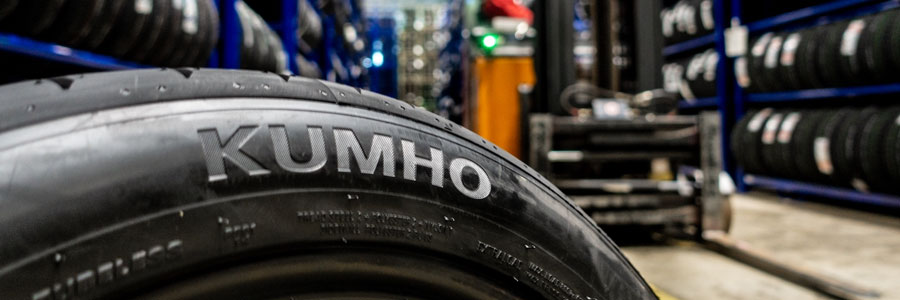Do EV tyres cost more?

Motoring costs are changing rapidly as electric vehicles become more common on UK roads. The focus has been on “fuel” costs, charging infrastructure and tax, but other important aspects - such as maintenance, and consumables like tyres - are almost slipping under the radar.
Much is made of electric cars being heavier than comparable petrol or diesel models, and the effect this can have on tyres. But do EV tyres cost more? And do electric car drivers need to fit them more often?
Do you need special EV tyres?
The simple answer is no - as long as the tyre fits the wheel and manufacturer ratings, you don’t need any special tyres for EVs, which means that fitting a new tyre is no more costly than compared to an non-electric car.
However, there are tyres designed specifically for electric vehicles, and these are often fitted as standard on new models. These don’t have any great differences compared to “normal” tyres, but are similar to low-rolling resistance tyres developed to help improve efficiency on petrol and diesel cars around 15 years ago.
The compound used is a little harder to make them longer-lasting and less grippy - though not to an unsafe degree - and the grip pattern is designed to help reduce rolling resistance. They also tend to be quieter which suits the characteristics of EVs. But these sorts of tyres are available for other cars too, even if some are being labelled specifically as EV tyres.
EV tyres do tend to be larger however - that’s because most new EVs are SUVs - so it is important to factor this into maintenance schedules. If you want to replace an EV-specific tyre, there is more chance that it will need to be ordered into a local tyre fitter, so consider this when looking to change tyres to reduce waiting time when it’s really needed.
Do EVs need more tyre changes?
Current data shows that they do, but it’s not simply a case of blaming the increase in weight. This is clearly a factor though, and cannot be completely discounted.
Most electric vehicles are up to around 300kg heavier than a comparable petrol or diesel model - a heavy battery pack, minus the weight of an engine and ancillaries - which is the equivalent of carrying around a car full of people, before anyone else has got on-board. This creates greater rolling resistance and needs the tyres to work harder when braking, so will increase tyre wear compared to a lighter model.
However, the way an electric car is driven can mitigate this to a degree.
There is some evidence that when drivers get into their first EV they tend to make the most of the instantaneous acceleration, which leads to premature wear of the first set of tyres. But this evens out on the second and third sets.
“With EVs there does seem to be a tendency for drivers new to electric vehicles to make continued use of the exceptional acceleration offered – at least during the initial phase of the driver’s lifecycle with the vehicle,” explains Mark Holland, operations director at tyre replacement specialist ATS Euromaster.
“The data is very young at the moment and there’s certainly not enough to draw significant conclusions about tyre wear, but driver behaviour appears to be a significant factor.”
In a recent survey conducted by Michelin, nearly 60% of drivers said they enjoyed the accelerative power of EVs and used it at every opportunity where it was safe to do so or did so during the early phase of vehicle ownership before resorting to more moderate levels of acceleration.
Mark Hollands adds: “This strongly suggests to us that fleets should prepare for accelerated tyre replacement on EVs, certainly in the first phase of driver use. It seems the novelty of the EV driving experience is having an unexpected effect on tyre wear rates.”
Indeed, by driving an EV to its strengths and being aware of the differences, it can be easy to see tyre wear at a similar weight to non-EVs, according to information gathered by RED Corporate Driver Training. This includes the need to accelerate more carefully, as electric motors offer all the available power as soon as the throttle is pushed. This can cause more cases of wheel spin and harsher acceleration - both of which create more tyre wear.
By lifting off earlier and using the EV’s brake energy recuperation system to help slow the car down, not only will a driver top up the battery a little under braking, but it will also put less strain on the tyres and again cause less wear.
By driving in an EV-friendly style, it’s relatively simple to bring tyre wear - and therefore costs - closely in line with petrol and diesel models, otherwise it’s easy to see tyre costs increase.
Rob Marshall, Operations Director at Gateway2Lease, suggests: “There is a strong recommendation that fleets should consider some form of driver training as part of the switch to electric vehicles.
“The driving style, how you charge an EV, and so on are quite different to what drivers might have been used to in a previous diesel or petrol company car. It certainly makes sense to have some form of acclimatisation programme prior to handing over the keys to the new car.”
View our latest blog posts

Categories
Pages
We are a family run business based in rural Worcestershire. Our team of 38 staff are on hand to provide an exceptional service to personal and business customers.
Read More
